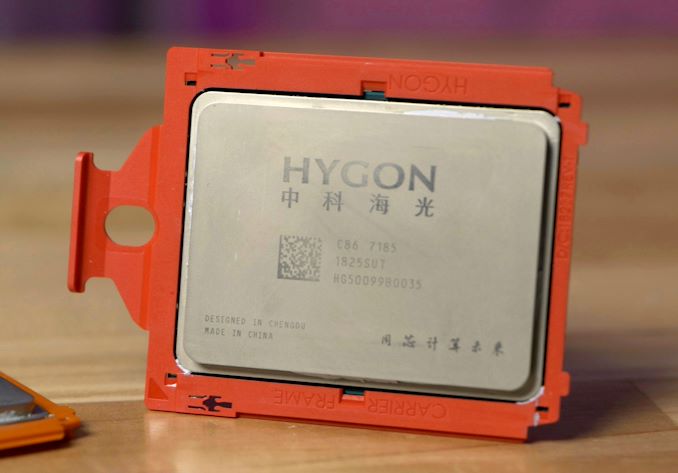
A rack comprised of two Hygon server-based processors was spotted on the Geekbench browser featuring a run of Geekbench’s new AI-based benchmark. Benchleaks on X reports that the chip’s CPUID name is 900F22.
Sadly for the company, the dual-CPU configuration scored abysmal results in Geekbench’s AI benchmark. The single precision score was 1,412 points, half precision score 531, and the quantized score was 1,523. The two CPUs operated at a base frequency of 3GHz flat and were paired with 64GB of memory.
By comparison, Intel’s nearly 10-year-old Skylake-based Core i7-6700HQ quad-core mobile CPU was barely any slower than the dual 32-core chips, featuring a single precision score of 1,113 points, half-precision score of 589 points and a quantized score of 1,394 points.
| Row 0 – Cell 0 | Single Precision Score | Half Precision Score | Quantized Score |
| Dual Hygion 16-core CPUs | 1,412 | 531 | 1,523 |
| Core i7-6700HQ | 1,113 | 589 | 1,394 |
| Ryzen 5 7600X | 3,542 | 1,686 | 1,394 |
Compared to a much more modern CPU, the Hygon-based server rack is (expectedly) vastly outperformed by mid-range desktop CPU hardware. For instance, one AMD Ryzen 5 7600X user report we pulled up scored 3,542 points in single precision, 1,686 points in half-precision, and 6,281 points in quantized, representing a 2.5x to 4x performance improvement over the Hygon server CPUs, despite having only a fraction of the number of cores.
We can’t be sure what exact Hygon CPU model was tested, but regardless, Hygon only utilizes AMD’s original Zen architecture from 2017 in all of its server chips — in-fact, it has figured out a way to port AMD’s Zen architecture into AMD’s latest SP5 socket, which powers its latest Zen 5-based chips. This is why Hygon’s CPUs suffer a serious performance deficit compared to all modern CPUs, despite having many cores.
Hygon is a fabless Chinese-based chip maker, and due to U.S. sanctions, it can’t use anything beyond AMD’s original Zen architecture (at least for now), which is the company’s Achilles heel for competitive generational performance improvements. The only way it has been able to boost performance is by adding more cores to its CPUs and adding more CPUs to its platform, which does help boost multi-core performance but critically doesn’t help in most other areas such as single-core IPC and latency-related bottlenecks, not to mention missing out on the latest CPU instruction sets such as AVX-512.






